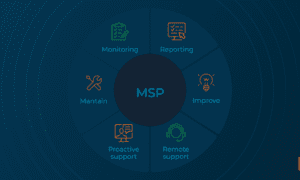India’s financial sector is rapidly evolving, driven by technology that enables faster, safer, and more inclusive services. At the centre of this transformation lies API Integration, the invisible framework that allows banks, fintech companies, and government platforms to communicate seamlessly. Whether through Aadhaar-enabled services, digital lending, or real-time payments, APIs have become indispensable.
But as the adoption of banking API and fintech APIs grows, security becomes a critical factor. Sensitive customer data, financial transactions, and regulatory compliance depend on how securely APIs are built and managed. This blog explores best practices to secure API usage in the BFSI and fintech ecosystem, while also looking at real-world applications shaping India’s digital economy.
Understanding APIs in Finance
An API, or Application Programming Interface, is a set of rules that allows two software systems to talk to each other. In BFSI and fintech, APIs enable:
- Digital payments.
- Account management.
- e-KYC verification.
- Loan disbursals and credit scoring.
Instead of building new systems from scratch, fintech players rely on API Integration to connect with existing infrastructure like government platforms, payment networks, and bank systems.
Why Securing API Integration is Crucial?
APIs in finance handle sensitive information such as identity details, account numbers, and transaction data. Without adequate safeguards, risks such as fraud, data breaches, and service disruptions become real threats. A poorly secured banking API can expose not only customer data but also the reputation of financial institutions.
Therefore, securing API transactions is not just about compliance; it is also about building user trust and ensuring smooth operations.
Best Practices for Securing API Integration
Here are the best practices for securing API integration:
1. Enforce Strong Authentication Protocols
Every API transaction must confirm the identity of the user or system involved. Widely accepted standards such as OAuth 2.0 and multi-factor authentication ensure that only authorised individuals or applications access financial data.
2. Encrypt Data End-to-End
Encryption protects sensitive information during transfer. Whether it is Aadhaar-based authentication or payments through a banking API, encrypting data ensures that even if intercepted, it cannot be read.
3. Use Tokenisation for Transactions
Tokenisation replaces sensitive information with unique identifiers or tokens. This ensures that actual account numbers or personal details are not exposed during a transaction.
4. Regular Security Testing and Audits
APIs evolve with time, and so do security threats. Continuous testing, penetration audits, and monitoring help detect vulnerabilities early, ensuring proactive fixes before exploitation.
5. Implement Rate Limiting and Access Control
Setting limits on API requests prevents malicious actors from overwhelming systems. Similarly, restricting access to sensitive APIs based on roles and permissions ensures that only authorised services are used.
6. Build Comprehensive Audit Trails
Audit logs create a record of all API activities, including who accessed what and when. This not only strengthens accountability but also supports regulatory compliance.
APIs Powering BFSI and Fintech
Financial Inclusion
Through Aadhaar-based e-KYC APIs, millions of Indians can open accounts within minutes. This removes paperwork barriers and extends services to rural and underserved areas.
Seamless Payments
UPI has become one of the most successful examples of API Integration. Its API-based model connects banks and apps, enabling instant, secure peer-to-peer payments.
Digital Lending
Fintech lenders use APIs to fetch credit data from banks, bureaus, and alternative sources. This real-time access allows faster loan disbursals, democratising credit availability.
Open Banking Collaborations
Traditional banks are increasingly opening their APIs to fintechs. This collaboration enables new financial products that are more personalised and accessible.
Compliance and Regulation
The Reserve Bank of India and regulatory bodies mandate strict protocols for banking API security. Standards such as TLS encryption, real-time fraud detection, and consent-based data sharing ensure that APIs protect user interests while supporting innovation.
In frameworks like the Account Aggregator model, APIs empower customers to share their financial data securely across institutions while retaining control over consent and privacy.
Real-World API Use Cases in India
- UPI apps: Facilitate instant payments through API-based interoperability.
- Payment gateways: Use APIs to support businesses in accepting multiple forms of online payments.
- NeoBanks: Operate almost entirely on API Integration, offering full-service banking digitally.
- Digital lenders: Leverage APIs for instant KYC, credit scoring, and same-day disbursals.
These examples highlight the versatility and security needs of APIs in India’s financial ecosystem.
Conclusion
As India aims to build a trillion-dollar digital economy, APIs will remain the foundation of BFSI and fintech innovation. With emerging technologies like AI, blockchain, and IoT increasingly relying on API Integration, security practices will continue to evolve. The future of finance in India is not just digital but API-first, with trust and compliance at its core.
Frequently Asked Questions
1. What is API Integration in banking and fintech?
It is the process of connecting banking systems or fintech platforms using APIs to enable seamless services like payments, e-KYC, and account management.
2. Why is securing banking API important?
A banking API handles sensitive customer and financial data. Securing it ensures privacy, prevents fraud, and builds user trust.
3. How do APIs improve customer experience in BFSI?
APIs streamline processes like instant payments, online lending, and account balance checks, giving users real-time access to services.
4. What are some common risks in API usage?
Risks include data breaches, unauthorised access, denial-of-service attacks, and compliance violations if security protocols are weak.
5. How can fintech firms ensure safe API Integration?
They can adopt practices like strong authentication, encryption, tokenisation, rate limiting, and regular security audits to safeguard data and transactions.



































